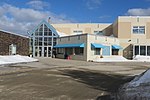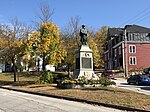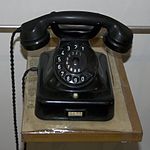Rollins State Park
1950 establishments in New HampshireParks in Merrimack County, New HampshireProtected areas established in 1950State parks of New HampshireUse mdy dates from August 2023 ... and 1 more
Warner, New Hampshire

Rollins State Park is a public recreation area on the southern slope of Mount Kearsarge in Warner, New Hampshire. The state park is at the entrance to an auto road that ascends to within 0.5 miles (0.8 km) of the summit. Picnic facilities are available, and hiking trails leave from the high point of the auto road to the summit. The park is named for Frank W. Rollins, who served as governor of New Hampshire from 1899 to 1901.
Excerpt from the Wikipedia article Rollins State Park (License: CC BY-SA 3.0, Authors, Images).Rollins State Park
Kearsarge Mountain Road,
Geographical coordinates (GPS) Address Nearby Places Show on map
Geographical coordinates (GPS)
| Latitude | Longitude |
|---|---|
| N 43.345833333333 ° | E -71.849444444444 ° |
Address
Kearsarge Mountain Road 1068
03278
New Hampshire, United States
Open on Google Maps









